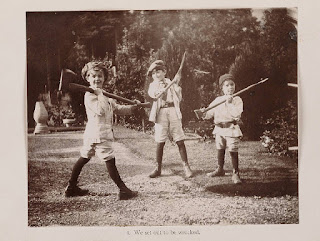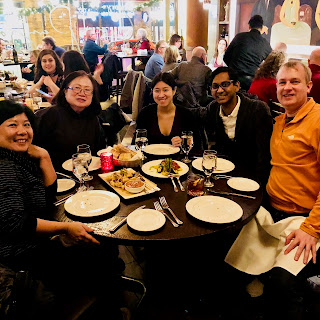 I’ve been trying to find more purpose behind reading books. If I forget what I’ve read, why bother reading anything at all? Of course I love to read. And that should be reason enough to do it. But I’d like to believe that I’m improving myself through reading, whether by learning something new, or just to be an educated, well-read member of society. This is why I vow to write a brief review for every book that I read. The effort it takes to summarize a book consolidates my learnings, and also, when I do forget what I’ve read (why deny the inevitable?), I can review what I learned.
I’ve been trying to find more purpose behind reading books. If I forget what I’ve read, why bother reading anything at all? Of course I love to read. And that should be reason enough to do it. But I’d like to believe that I’m improving myself through reading, whether by learning something new, or just to be an educated, well-read member of society. This is why I vow to write a brief review for every book that I read. The effort it takes to summarize a book consolidates my learnings, and also, when I do forget what I’ve read (why deny the inevitable?), I can review what I learned.
This review is part of my effort to write down a few words for every book that I read.I was inspired to read,
“Why We Sleep - Unlocking the Power of Sleep and Dreams”, after listening to neuroscientist and Berkeley professor, Matthew Walker speak on NPR’s “Fresh Air”. I have always known what a balm sleeping was for illness, and I have always had a basic appreciation for how it healed the body after exercise. What intrigued me, however, was his assertion that sleep is also actually good for our mental health, and emotional regulation.
Have you ever gone to bed, only to wake up in the middle of the night drenched in sweat, worrying about the past day’s events? I have a confession: I am sometimes kept up at night by worry. By morning’s time, however, my anxiety usually is reduced, or completely gone. As a result, I have taken the motto, “sleep on it”, to heart. For me, this motto means that my problems are never truly as bad as they seem at night.
I never came across a good explanation behind my experience until I read Walker’s book. According to Walker, sleep is not only great for your body and other things, but it is also a PAINKILLER FOR YOUR EMOTIONS!!! It is REM dreaming in particular that helps. According to Walker, we often dream about things that have emotional relevance to whatever problems we are undergoing at the moment. (We know this because the emotional parts of our brains fire during REM sleep, and because we ask sleep subjects what they dream about.) This is not terribly surprising. What is unusual is that this occurs while there is a complete absence of noradrenaline in our brains. Noradrenaline is a stress chemical that is normally present. In fact, the only time it is absent is during REM sleep. The heart of Walker’s thesis is this: the act of replaying our emotions in dream form, while no noradrenaline is present, is what anesthetizes us against the pain of our past:
“Is the REM-sleep dreaming state a perfectly designed nocturnal soothing balm—one that removes the emotional sharp edges of our daily lives? It seemed so from everything neurobiology and neurophysiology was telling us (me). If so, we should awake feeling better about distressing events of the day(s) prior.”
There is evidence to suggest he might be right. Sleep studies have shown that subjects who were introduced to traumatic photos experience less emotional charge after sleeping than subjects who were not given a sleep opportunity.
Another data point supporting his thesis is PTSD patients. There is a segment of society for whom sleep does not lessen emotional trauma, for whom time does not heal wounds. This group of people are veterans suffering from PTSD (post-traumatic stress disorder). These people relive emotionally traumatic events as though they had happened yesterday without the lessening of pain we normal people experience through time. It is well known that PTSD patients have disrupted REM sleep. Even more unusually, these people exhibit elevated levels of noradrenaline in their brains during REM sleep, unlike regular people.
The author was pivotal in pioneering a method for treating these veterans by introducing a medicine that reduces their noradrenaline levels while they dreamt. Veterans who underwent this treatment began to have less traumatic dreams, and soon their PTSD symptoms lessened as well. This novel treatment for PTSD patients lends credence to the author’s theory that lowered noradrenaline levels during REM sleep is what helps anesthetize all of us against emotional pain in our lives.

What I found equally revelatory about this book, beyond how sleep helps our emotional well-being, was finding out the biological basis behind each person's chronotype, and why it cannot be changed. A chronotype, in case you did’t know, is what time you prefer to go to sleep, and what time you prefer to wake up each day. A morning person, or a “lark” (as sleep enthusiasts call them), will go to bed early, and who will rise at ungodly times in the morning. Whereas a night person, or an “owl”, will tend to stay active way into the night, and prefer to wake up later. It used to be that night owls were considered lazy and were forced to abide by early riser's schedules. If chronotypes did not have a biological basis, then why is it that sleep preferences change as we age across large swaths of the population? Time and time again, studies have shown that people will tend to late-shift their sleep patterns during adolescence, and early-shift their sleep patterns when they hit retirement age.
Contrary to many’s opinions, and contrary to our lark-favoring society, one’s chronotype cannot be changed, no matter how much willpower you have. Our chronotype is governed by a small part of our brain called the “suprachriasmatic nucleus”. Cued by external signals like the sun, it pumps out a continuous stream of the hormone, melatonin on an approximately 24 hour cycle. A build up of melatonin is what triggers our sleepiness. During sleep, melatonin drops from the system, and the cycle can then begin anew each day. A lark will have an earlier melatonin infusion with respect to the sun than an owl. Because our melatonin production (which cues our sleepiness), is cued by things out of our control like the orbiting of our sun, our specific chronotype cannot be changed.
Why your chronotype is important is because our society is geared towards morning people, which is hugely detrimental to late risers like myself, who cannot adjust their chronotype, and hence suffer the mental and physical consequences as a result. Naturally, if you are an owl like myself, and was forced to wake up too early, this would not only reduce the total amount of sleep I would have, but also would reduce the very important REM sleep that I would be getting in the morning. We get more NREM sleep early in the night, and we get more REM sleep in the morning. REM sleep, as previously stated is super-important to emotional health, but is also supremely important to our social intelligence, and creativity, among other things. By forcing me into a morning person’s schedule, you might very well be making me more depressed, hindering my ability to read social cues, and preventing me from thinking innovatively — all detrimental to living well.
This book has hence made me particularly annoyed at those who glamorize sleeping as little as possible. I have coworkers who profess to having less than 4 hours of sleep a night. I can tell they are sleep deprived from their performances. I get equally angry at institutions like grade schools, which force their students to wake up too early in the morning, which we know is so important to our emotional health, all while their brains are still developing.
We now know much more about “Why We Sleep” than we used to. Hopefully, more people will prioritize their sleep more. It would benefit not only their mental cognition, but also their emotional health.


















